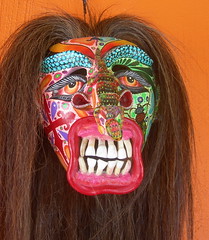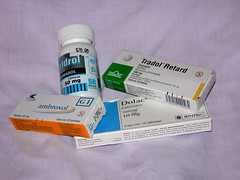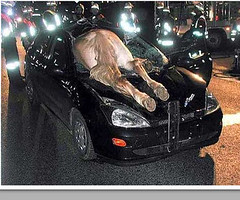Taken from "The Guadalajara Reporter" Sept. 11-17, 2010
International media reports on Mexico's war against the drug cartels tend to paint extreme pictures that are out of sync with the nationwide reality, according to Latin America law and security expert Ana Maria Salazar. "Some versions indicate that the country is falling apart at the seams while others proclaim that Mexico is safer than Canada."
The country's current security situation cannot be defined in generalized terms. Salazar insists it must be viewed in distinct local contexts she describes as "different Mexicos," with the understanding that the crime status in any particular place is subject to radical changes that may occur unexpectedly. She pointed to recent surprise spikes in violence that have rocked northern Mexico, particularly in Monterrey and the state of Tamaulipas.
Salazar addressed the topic of security in Mexico as the guest speaker of the lakeside branch of Grupo Financiero Multiva. The conference, held at the Hotel Real de Chapala, drew a large audience of expatriates on Sept. 8.
Salazar's impeccable credentials of law and security issues in Latin America include stints as judicial attache at the US Embassy in Bogota, Colombia, a White House policy advisor under Bill Clinton, and deputy assistant Secretary of Defense for Drug Enforcement Policy and Support at the Pentagon. Now based in Mexico City, she is a respected media pundit who moderates the current events blog "Mexico Today" and hosts "Imagen News".
Her talk began just hours after US Secretary of State Hillary Clinton went on record drawing a troubling parallel between the current level of violence linked to Mexican drug cartels and the narco-insurgency that plagued Colombia 20 years ago. Based on her experiences in Colombia during that critical time, Salazar downplayed Clinton's assessment. She doesn't see signs that traffickers here are employing systematic strategies to gain political clout in the way that Colombian drug lords did by infiltrating the country's legislative branch and targeting innocent civilians in acts of violence.
Many of Salazar's listeners chuckled or nodded knowingly when she wondered whether salacious stories breaking north of the border had prompted frantic calls of messages from concerned friends and relatives back home, often punctuated by the worried question "What the hell are you doing down there?"
Discussion of Jalisco crime statistics--indicating a comparatively moderate crime rate--gave some backup to a seemingly prevalent "why worry?" attitude among local expats. For example, data compiled by the independent security think tank ICESI show an incidence of 8.2 homicides per 100,000 Jalisco residents during 2009, a figure comparable to most US cities. In addition, the state's homicide rate is currently about five times less than it was just over a decade ago.
While acknowledging that the overall lack of consistent and reliable data makes it hard to accurately gauge the country's crime and security status, she pointed out that news reports have created a misleading perception that the current murder rate is stratospheric. In fact, available figures point to an average homicide rate similar to that of 2001.
In Salazar's view, Mexico's crime scene is not likely to improve much over the next several years. However, on a note of optimism, she suggests that reforms of the country's judicial and law enforcement systems promise substantive improvements over the long term.
Her security advice for local expats is to find a proper balance between an outright disregard for personal safety and excessive paranoia. Noting that persons who take reasonable precautions have little reason to live in fear, she stressed. "Mexico is safe if you act safe."





